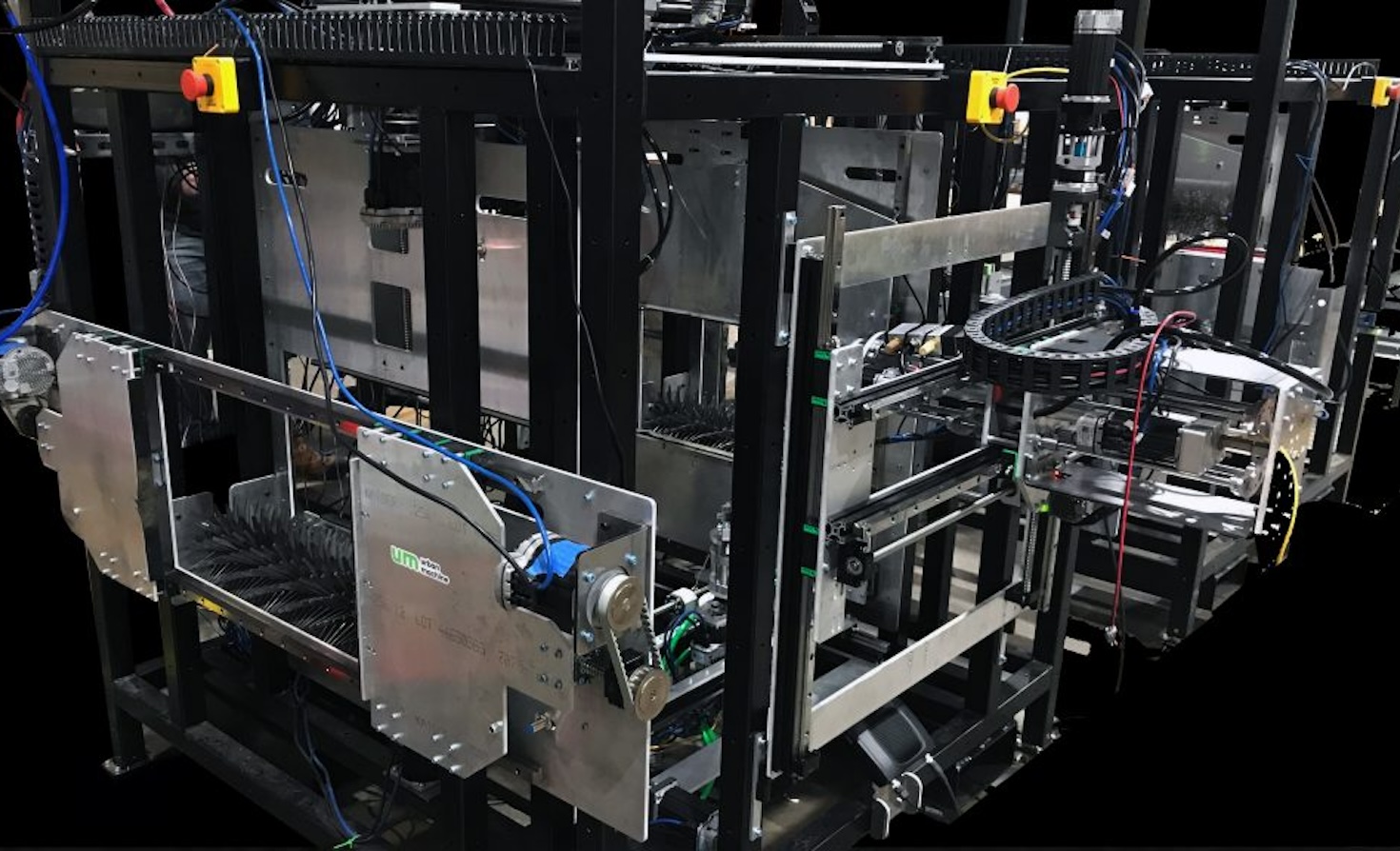Hailed as a savior by some and feared as a multi-pronged threat by others, artificial intelligence (AI) is revolutionizing everything from healthcare to transportation. AI tools are emerging as enablers of the circular economy, improving resource management, production and consumption.
Unlocking efficiency
AI can bring the circular economy to life by predicting maintenance needs,driving efficiency and minimizing waste within systems. Through real-time data analysis, AI can track and assess the entire lifecycle of a product within a complex supply chain. By monitoring usage patterns, wear and tear and demand fluctuations, AI can optimize the circulation of products, reducewaste and identify opportunities for reuse and recycling.
A 2019 report by the Ellen MacArthur foundation and Google identified the three most promising applications of AI for the circular economy: designing circular products, components and materials; operating circular business models; and optimizing circular infrastructure.
For the circular economy, there are countless potential applications in the years to come, with plenty of startups already harnessing AI to achieve tangible results. Let’s look at two examples.
Reducing wood waste
“In the United States, the fate of wood waste has often been a one-way trip to landfills,” Eric Law, CEO and cofounder of Urban Machine, said via email. “The scale of this issue is immense — 37 million tons annually.”
Although much of this is salvageable, metal fasteners throughout the wood may be broken, corroded or difficult to access, so converting the waste wood into a usable, high-quality resource is laborious and costly.
Urban Machine is reclaiming millions of tons of construction-grade lumber from construction and demolition projects. Its AI and robotics locate and extract nails, screws and staples from salvaged wood, transforming it into high-quality, locally sourced lumber for builders and designers. AI also calculates the quantity and quality of wood recovered at each location. Developers, contractors and demolition companies can rent Urban Machine’s AI-enabled, metal-extracting robot for onsite projects, reducing impacts to local landfills.

![]()
![]()
Simplifying resale
The resale of clothing can keep material out of landfills and reduce consumption. However, multiple barriers for resale businesses include the cumbersome process of taking good photographs of an item, crafting an accurate description and setting the right price.
In the Loop uses AI to streamline identifying, processing and listing secondhand items. With just a few photographs of a garment, the AI generates a detailed description within seconds of the brand, size and category, as well as the specific measurements and material.
Before using In the Loop’s AI tool, professional reseller clients spent an average of 8 minutes between photographing and listing an item online, CEO and Co-founder Zahra Biabani told me by email. The tool reduced that to an average 1.5 minutes, allowing clients to list five times as many items in the same amount of time, she said.
AI is often portrayed as a revolutionary force, but its applications are often more nuanced. Urban Machine and In the Loop show how AI enhances single steps in a process, creating seemingly small impacts. The power, however, lies in scalability. When these singular efforts multiply across industries and regions, the cumulative impact can be substantial. The power of AI to advance circularity will emerge from a series of such nuanced, impactful actions.
- SEO Powered Content & PR Distribution. Get Amplified Today.
- PlatoData.Network Vertical Generative Ai. Empower Yourself. Access Here.
- PlatoAiStream. Web3 Intelligence. Knowledge Amplified. Access Here.
- PlatoESG. Carbon, CleanTech, Energy, Environment, Solar, Waste Management. Access Here.
- PlatoHealth. Biotech and Clinical Trials Intelligence. Access Here.
- Source: https://www.greenbiz.com/article/these-2-startups-preview-future-ai-circular-economy
- :has
- :is
- 1
- 15%
- 2%
- 2019
- 5
- 8
- a
- access
- accurate
- Achieve
- across
- actions
- advance
- AI
- Allowing
- already
- also
- amount
- an
- analysis
- and
- Annually
- applications
- ARE
- artificial
- artificial intelligence
- Artificial intelligence (AI)
- AS
- assess
- At
- average
- barriers
- BE
- been
- between
- brand
- bring
- Broken
- builders
- business
- businesses
- but
- by
- calculates
- CAN
- Category
- ceo
- chain
- circular
- circular economy
- Circulation
- click
- clients
- Clothing
- Co-founder
- cofounder
- combining
- come
- Companies
- complex
- components
- construction
- consumption
- contractors
- converting
- costly
- Creating
- cumbersome
- data
- data analysis
- Demand
- description
- designers
- designing
- detailed
- developers
- difficult
- driving
- each
- economy
- efficiency
- efforts
- emerge
- emerging
- Enhances
- Entire
- equipment
- eric
- Ether (ETH)
- everything
- examples
- extract
- fate
- few
- five
- fluctuations
- For
- Forbes
- Force
- Foundation
- from
- future
- Future of AI
- generates
- Glimpse
- good
- Harnessing
- healthcare
- high-quality
- How
- However
- HTTPS
- identified
- identify
- identifying
- immense
- Impact
- impactful
- Impacts
- improving
- in
- include
- industries
- Infrastructure
- Intelligence
- into
- issue
- IT
- items
- ITS
- just
- Keep
- Law
- lies
- Life
- lifecycle
- List
- listing
- local
- locally
- location
- Look
- MacArthur Foundation
- machine
- maintenance
- management
- many
- marketplace
- material
- materials
- May..
- me
- measurements
- metal
- million
- millions
- minimizing
- minutes
- models
- monitoring
- more
- most
- move
- much
- multiple
- multiply
- needs
- nuanced
- of
- often
- online
- operating
- opportunities
- Optimize
- optimizing
- or
- Others
- out
- patterns
- photographs
- plato
- Plato Data Intelligence
- PlatoData
- Plenty
- portrayed
- potential
- power
- predicting
- presentation
- Preview
- price
- process
- processing
- Product
- Production
- Products
- professional
- projects
- promising
- quality
- quantity
- real-time
- real-time data
- recycling
- reduce
- Reduced
- reducing
- regions
- Rent
- report
- resource
- Results
- reuse
- revolutionary
- Revolutionizing
- right
- robot
- robotics
- Said
- same
- Scalability
- Scale
- seconds
- Series
- setting
- she
- show
- single
- singular
- Size
- small
- So
- some
- sourced
- specific
- spent
- Startups
- States
- Steps
- streamline
- substantial
- such
- supply
- supply chain
- Systems
- taking
- tangible
- that
- The
- The Future
- There.
- These
- this
- three
- Through
- throughout
- time
- times
- to
- told
- tons
- tool
- tools
- track
- transforming
- transportation
- trip
- two
- United
- United States
- urban
- usable
- Usage
- uses
- using
- via
- Waste
- wear
- WELL
- when
- will
- with
- within
- wood
- years
- zephyrnet








